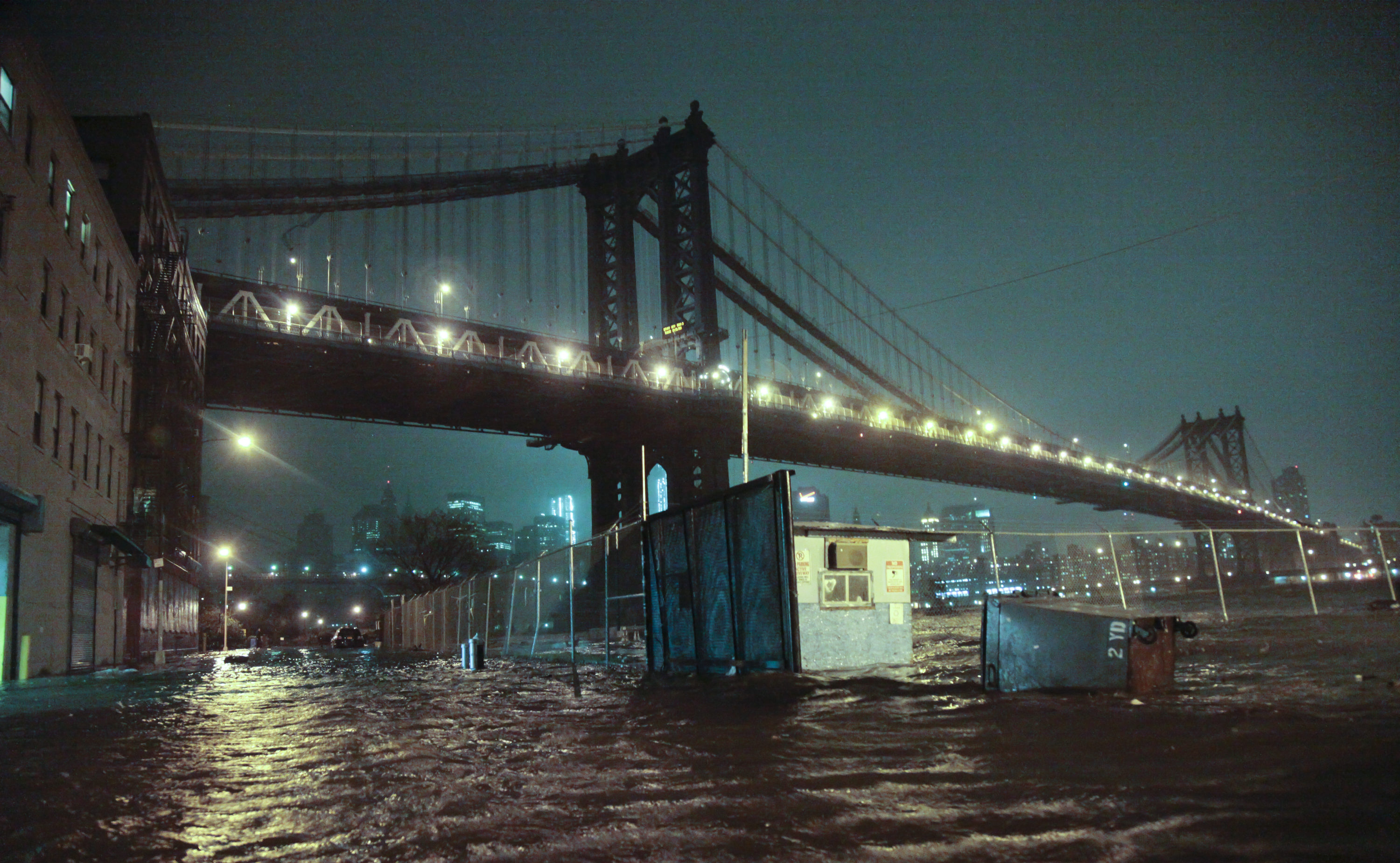As the city prepares for more frequent emergencies, a new emphasis on tech

Streets flooded under the Manhattan Bridge in DUMBO during Superstorm Sandy. Photo: Bebeto Matthews/AP
New York City’s emergencies are becoming more frequent and more complex than they were in the past, says the woman in charge of handling them — and it’s not going to get any easier. Her solution? Prioritizing technology.
Disasters are multiplying because of “climate change, social and economic inequity, aging infrastructure, reliance on technology, cyber threats and domestic terrorism,” said Deanne Criswell, commissioner of the city’s Emergency Management department, at the ISC East security conference on Nov. 20.
Criswell, appointed to lead the agency in June by Mayor Bill de Blasio, laid out her plans to use technology to help first responders make decisions when all hell breaks loose.
